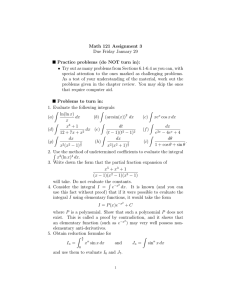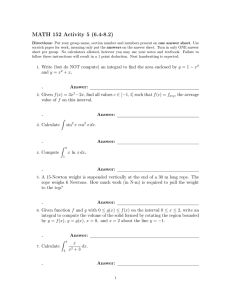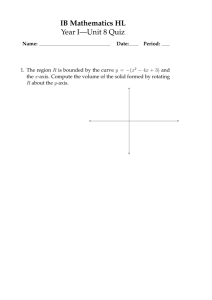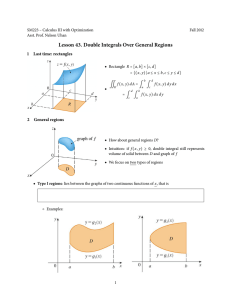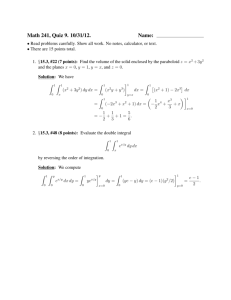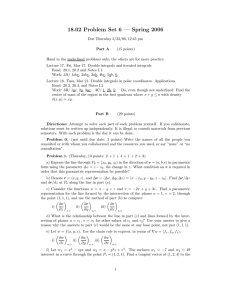1. (3 points) Compute the following integral: Z 1 dx
advertisement
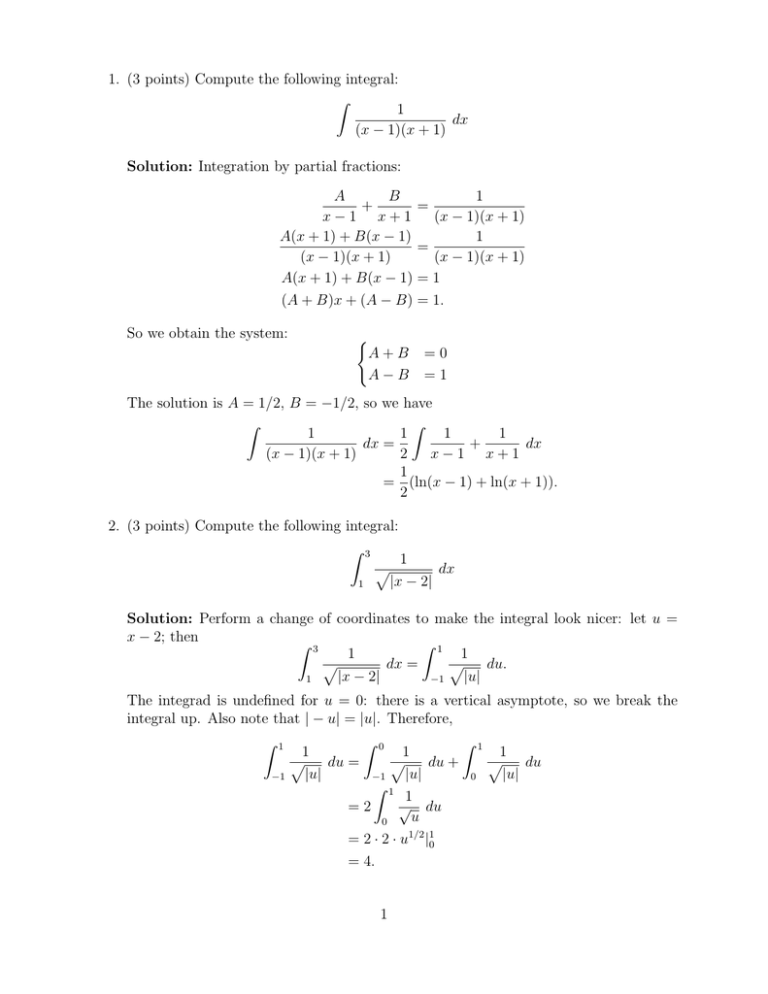
1. (3 points) Compute the following integral: Z 1 dx (x − 1)(x + 1) Solution: Integration by partial fractions: A B 1 + = x−1 x+1 (x − 1)(x + 1) 1 A(x + 1) + B(x − 1) = (x − 1)(x + 1) (x − 1)(x + 1) A(x + 1) + B(x − 1) = 1 (A + B)x + (A − B) = 1. So we obtain the system: ( A+B A−B =0 =1 The solution is A = 1/2, B = −1/2, so we have Z Z 1 1 1 1 dx = + dx (x − 1)(x + 1) 2 x−1 x+1 1 = (ln(x − 1) + ln(x + 1)). 2 2. (3 points) Compute the following integral: Z 3 1 p dx |x − 2| 1 Solution: Perform a change of coordinates to make the integral look nicer: let u = x − 2; then Z 1 Z 3 1 1 p p dx = du. |x − 2| |u| −1 1 The integrad is undefined for u = 0: there is a vertical asymptote, so we break the integral up. Also note that | − u| = |u|. Therefore, Z 1 Z 0 Z 1 1 1 1 p p p du = du + du |u| |u| |u| −1 −1 0 Z 1 1 √ du =2 u 0 1/2 1 = 2 · 2 · u |0 = 4. 1 3. (4 points) Find the length of the curve y = √ 1 − x2 from x = −1/2 to x = 1/2. Solution: The arclength of the unit circle from 32 π to 13 π is 13 π. Or, if you are feeling adventurous and like trigonometric integrals: y= Z 1/2 L= p √ x 1 − x2 ⇒ y 0 = √ 1 − x2 Z 1/2 r x2 1+ dx 1 − x2 −1/2 Z 1/2 r 1 dx = 1 − x2 −1/2 1 + (y 0 )2 dx = −1/2 1/2 = arcsin x|−1/2 = π/3. 2
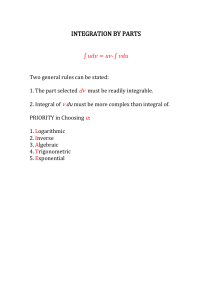
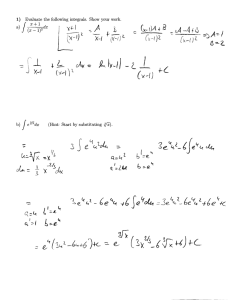
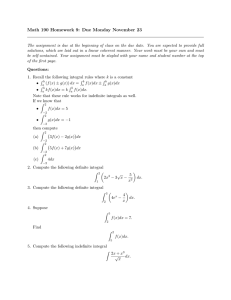

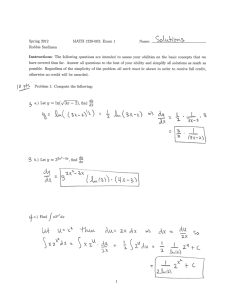




![MA2224 (Lebesgue integral) Tutorial sheet 7 [March 11, 2016] Name: Solutions R](http://s2.studylib.net/store/data/010730674_1-ca1a230eb5aca7dc4fc724de9a5a238d-300x300.png)
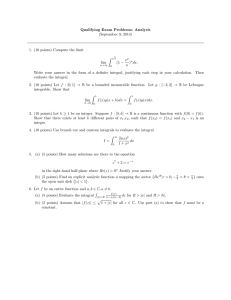
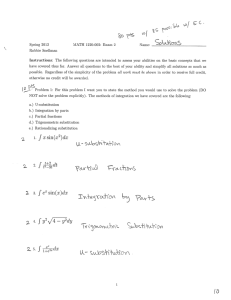
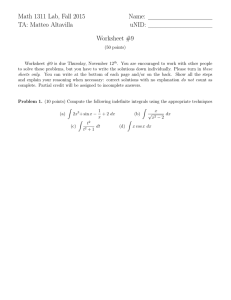
![MA1311 (Advanced Calculus) Exercise sheet 12 [Due Monday January 17th, 2011] Name:](http://s2.studylib.net/store/data/011008011_1-eb8038394b85890dc69ea0c4be6fc1d4-300x300.png)
